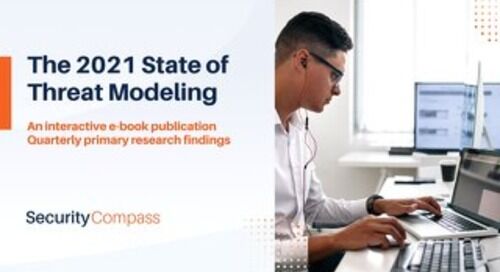Static Version
Introduction
With cybersecurity threats rising at an alarming rate over the past year, enterprises that build applications are increasingly realizing the necessity of adopting a security posture built on precautionary principles. With cyberattacks, it is no longer the case of “will it happen?” Rather, applications are more likely than not to come under many and varied cybersecurity attacks.
As a result, engineers of complex software systems have a burden of proof that what they create is safe from its onset rather than determining if it represents an unintended danger after the fact. Criminals are “innocent until proven guilty”; software applications are “guilty until proven innocent”.
This asymmetry between cybercriminals versus software developers is also apparent with respect to time and resources. While skilled cybercriminal groups can have seemingly unlimited time and resources at their disposal, software engineers are under constant pressure to bring their applications to market.
Addressing these imbalances, threat modeling has become core to ensuring applications can withstand future attacks. It is essential from the onset of the software development lifecycle to anticipate where attacks are likely to come from and to prescribe controls to mitigate risk from these threats. Additionally, it is essential that much of this process becomes automated, to ensure that time to market for new applications, and upgrades to existing systems, are not compromised.
To understand the current state of threat modeling and the challenges large enterprises encounter with the applications they build and deploy, Security Compass commissioned a comprehensive study on the topic.
Current State
Threat modeling is a key priority for most software development functions in large enterprises throughout the US and UK, with expected growth in the practice throughout 2021. Nonetheless, over a quarter of companies perform threat modeling only once on the applications they develop.
Building Cyber Resilience
There is little consistency within or across sectors on how many applications Threat Modeling is performed on.
Supply chains may be particularly vulnerable, as threat modeling is only performed a third of the time on the supply chain associated with apps that large enterprises develop.
The majority, however, do not start soon enough, during requirements gathering and design.
Challenges
New Technology Impact
As the interactive graph above shows, Machine Learning and AI have had the largest impact on threat modeling approaches overall. In companies where TM is a Top Priority these two technologies have caused even greater changes to threat modeling.
By contrast, in companies where TM is Worked on But Not a Top Priority, Blockchain has been the source of a great deal of change.
Automation
Having Threat Modeling fully automated is key, especially to companies that have made Threat Modeling a key priority in 2021.
Conclusion
Recognizing that many of the breaches and vulnerabilities that occur with software products are a result of human error in design, it is critical to build security into the software development lifecycle from the very beginning. At the same time, security and risk practitioners need to balance their responsibility to mitigate risk with their organization’s need for delivering software to users in a timely fashion.
Meeting the competing demands for more focus on cybersecurity during software development alongside time to market pressures, the automation of threat modeling has become key. Doing so at the beginning of the software development lifecycle for all applications deployed, not just the ones considered “business critical,” and repeating it with every new release is essential to staying safe and secure in an increasingly hostile digital world.
Many large enterprises are now achieving this balance, bringing secure software to market that is both secure and timely in meeting their customers’ needs.
